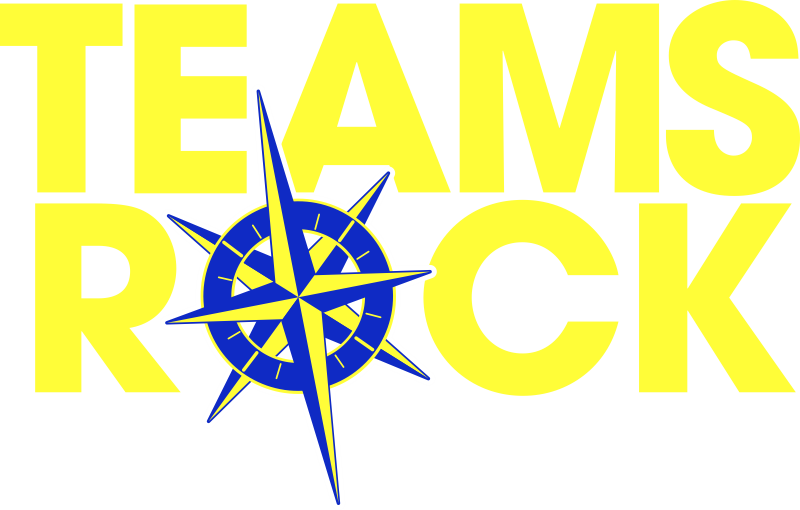What is Employee Training and Development, as it applies to what TeamsRock offers?
Employee training and development is one area that most companies cut in a budget first, which is ludicrous. Most successful companies actually increase certain types of training when business is slower. My philosophy, and the way that I believe employee training and development should be handled within an organization, is that every employee should take about 12 to 15 days of training per year. About 40% should be technical training for the job they do. Ten-percent should be compliance training. So you have 40% skill, 10% compliance, but that leaves 50% for soft skills and that’s where TeamsRock comes into play.
 In a 2008 interview I did with Mike Stingle, the VP of Marriott Hotels in charge of the Gaylord Brand, I learned that Marriott requires all of their full time employees take 80 hours a year of education. The employee gets to decide what they need education in, but they have to document 80 hours a year. The year I interviewed Mike, he was taking Italian. He said, “I already know Spanish, Japanese, German, Chinese, and Mandarin. The next segment for me to get is Italian, because that’s where a bunch of our clients are starting to come from now. So I have to be able to speak those languages.” So even as a General Manager of their flagship hotel in this country, he is still taking that training.
In a 2008 interview I did with Mike Stingle, the VP of Marriott Hotels in charge of the Gaylord Brand, I learned that Marriott requires all of their full time employees take 80 hours a year of education. The employee gets to decide what they need education in, but they have to document 80 hours a year. The year I interviewed Mike, he was taking Italian. He said, “I already know Spanish, Japanese, German, Chinese, and Mandarin. The next segment for me to get is Italian, because that’s where a bunch of our clients are starting to come from now. So I have to be able to speak those languages.” So even as a General Manager of their flagship hotel in this country, he is still taking that training.
I met Jeff Skiles, the copilot on the Miracle on the Hudson aircraft, US Airways flight 1549, that went down on the Hudson River. Nobody remembers Jeff because he was the copilot. Everybody remembers Sully Sullenburger, because Sully was the pilot. Well Jeff had just come out of employee training on the Airbus 320 airplane and so when they take off, Jeff is actually the person flying the aircraft. He was the pilot when the first bird hit the first engine. Seconds later, he’s still the pilot when the second bird hit the engine. And that’s when Sully said, “my aircraft.” And Jeff said, “you can have it back.” A lot of things came into play that day. We know that they landed safely on the Hudson River and that everybody got off, nobody was even really injured. There were a couple of things I learned from Jeff that day. Number one, a small plane of that nature, carries a crew of five people. They had only been working together for three days. That’s it. Jeff and Sully had never met three days before. So they got put into a team situation at a very unique time.
Sully had lots of flight experience. Jeff had just come out of training on that airplane. Jeff had flown plenty of other planes but he had just come out of training on the Airbus 320. Jeff also said that in the mid 1980’s, a lot of aircraft and airlines were experiencing significant problems with mishaps. Over ninety percent of them were little mishaps. Close calls, taxiing on the ground, problems with their teams working together and people not knowing what the others were doing, that kind of stuff. And US Airways made a concentrated effort at that time to stop training just on technical skills, because until that point, US Airways specifically trained pilots how to fly planes. Flight attendants specifically learned about safety and how to serve their technical skills on the airplane. Ground crews, gate agent crews, etc. were only trained on their specific job duties.
After the mid to late 1980’s, they started training everyone on soft skills. How to communicate, how to work together, how to deescalate customer issues. Even a pilot needs to know how to deescalate a customer problem. Once US Airways started this training, the number of mishaps went down drastically.
Soft skills matter enormously. Employee training and development can reduce safety issues, increase team morale, increase overall morale, increase the “winning style” culture, increase productivity, decrease employee tension, and decrease employee turnover. There’s no downside.
People look at employee training and development as an expense. Most companies will say that employees are an asset. Yet when you look on a balance sheet of an accounting firm, where do the employees line up? They come in as, and are treated as, an expense.
Southwest Airlines says, “Our number one customer is not our customer. Our number one customer is our employee. If we take care of our employees, our employees will take care of our customers.”
There’s not a silver bullet to making things work. It really is a multi-faceted approach. So, 40% needs to be skill based, 10% needs to be focused in on compliance issues, but the other 50% can be many different ways to help the employee, whether it be soft skills like teamwork, leadership, social communication, email communication, writing skills, etc. Employee training and development will help build trust. It opens the lines of communication which, in turn, reduces negative conflict and allows people to have a better commitment to the project. It allows people to hold each other accountable without feeling, “I can’t do that.” It allows them to hold people accountable in an effective way. So it increases effectiveness within the organization.
Related articles: Employee Development Plan, Employee Development Methods, Stage of Team Development, Team Development
Other topics that may be of interest to you: Organizational Culture, Leadership Development, Teamwork in the Workplace, Employee Retention
MAKE YOUR TEAMS ROCK!!
Is your organization stuck in a rut? Do your employees work as individuals without a common goal? Does productivity lag as the day drags on?
When your employees collaborate, communicate and function as a team, productivity and office happiness reach new heights. From senior leaders to front line workers, everyone is a part of the team. Get your team together for a team building experience from Gregg Gregory.
Gregg Gregory is an experienced Certified Speaking Professional specializing in the development of team cultures. Book Gregg today and get your teams rocking!
Gregg’s keynote programs motivate and train attendees to create better teams in the workplace, increasing efficiency and employee happiness.
Directly involve your employees in one of our interactive team training sessions.

